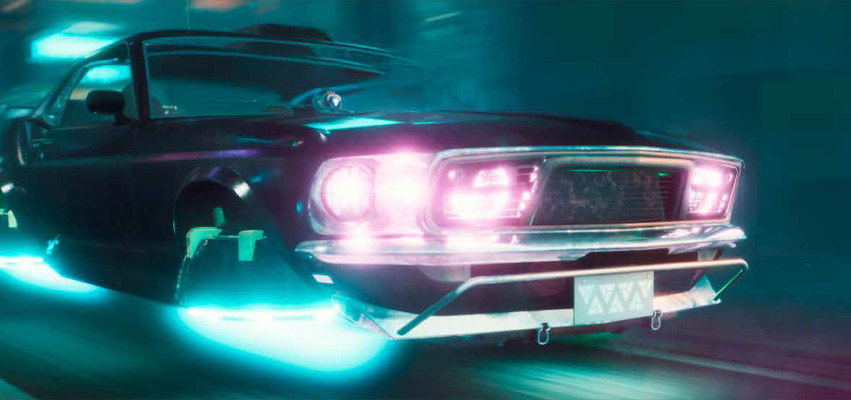Where’s My Flying Car?

The future is a tricky place to visit, a harder place still from which to send a postcard.
We are an anxious people, desperately trying to crane our necks around the corner, hoping to glimpse an eye-popping tomorrow. Amid such an eager audience, prognostication has always been a steady racket, and not just for sideshow fortune tellers. News media long have provided a platform for self-styled experts armed with crystal balls, especially when it comes to technology and science.
I thought about that as we put together this month’s magazine, which focuses on innovation. Big thinkers with big mouths have forever promised The Next Big Thing. And we eat it up, waiting for mind-blowing inventions that will electrify our lives.
Yeah, yeah, I know what you’re thinking: “Where’s my flying car already?” A few decades ago, we somehow collectively got the idea – probably from watching the “Jetsons” too much – that we’d be zooming around the skies by now.
Actually, a California company called Aska says flying cars could be available – if perhaps not easily affordable – by 2026. The cost will be $790,000, which for most of us would make for a slightly higher monthly payment.
Still, flying cars sound exciting, until you think of the traffic implications. Lousy drivers have a hard time not crashing while doing 10 m.p.h. in a Kroger parking lot, let alone zipping freely through the wild blue yonder. Accidents overhead would rain down shattered glass and twisted metal. If you’re walking outside come 2026, you’d better carry a super-strong umbrella.
With all that cost and risk, maybe we won’t all be airborne anytime soon. Still, it’s hard not to get carried away by futuristic musings. In fact, I wish yesterday’s soothsaying scribblers had blessed us with more success. They came up with some doozies that I wish had come true.
For example, in 1950, the science editor at the New York Times wrote in Popular Mechanics about “Miracles You’ll See in the Next Fifty Years.” Among them was housekeeping by hose, as described amid the chores of a future, fictional housewife named Jane Dobson:
“When Jane Dobson cleans house, she simply turns the hose on everything. Why not? Furniture (upholstery included), rugs, draperies, unscratchable floors — all are made of synthetic fabric or waterproof plastic. After the water has run down a drain in the middle of the floor (later concealed by a rug of synthetic fiber), Jane turns on a blast of hot air and dries everything.”
Wow. No sweeping or vacuuming or dusting? Talk about easy-peasy. It sounds like how I clean my backyard deck, with just a casual blast of a garden hose. That’s the good life right there. Add a beer and some ‘70s rock, and that’s pretty much how I envision housecleaning in heaven.
I imagine that the hose-happy scenario was especially welcomed in light of another ‘50s oracle. Alex Lewyt, president of a self-named vacuum cleaner company, promised the world, “Nuclear-powered vacuum cleaners probably will be a reality in 10 years.”
Let’s set aside the safety worries of putting a nuclear device in every household. And let’s try, hard as it may seem, to ignore the potential effects on dogs. I mean, dogs totally freak out at the sound of a regular vacuum, so I can’t imagine what a nuclear vacuum would do to them.
Rather, my mind rockets to this question: How disgusting were 1950s homes that engineers feverishly sought to harness nuclear energy in the fight against filth? Whenever I’d see a show like “Leave It to Beaver,” June Cleaver seemed to be keeping a tidy household. Apparently, however, the remainder of Americans were pigs. Who knew?
Even so, the health outlook seemed good for the future, according to F.E. Smith. In 1922, the high-powered British politician and speaker said that by 2030, medical advances (including special injections) would help people routinely live to be 150 years old. He marveled, “How will youths of 20 be able to compete in the professions or business against vigorous men still in their prime at 120, with a century of experience on which to draw?”
Forgive me, but that prediction didn’t make me wonder about any pending employment plight of 20-somethings. Rather, my immediate reaction was, “I’d have to work how long?” Most workdays, I have a hard time staying motivated (or even awake) for the next 60 minutes, let alone another 60 years.
And though many such predictions overestimate potential advancements, others give short shrift to human ingenuity. For instance, in 1977, pioneering computer engineer Ken Olson warned of a possible technological overreach in everyday life, saying, “There is no reason for any individual to have a computer in his home.”
Hoo-hoo! No computer at home? What a goof.
Then again, think about that quote the next time you get home from work and spend a few minutes of precious free time amid the blowhards, haters and ranters on social media. Pretty soon, you’ll probably think, “No computer at home? Maybe that Olson guy knew what he was talking about.”
(This column includes information from amusingplanet.com, nbcbayarea.com, weforum.org, rd.com and cnbc.com)

Phil Luciano is a senior writer at
Peoria Magazine and contributor to WTVP.

